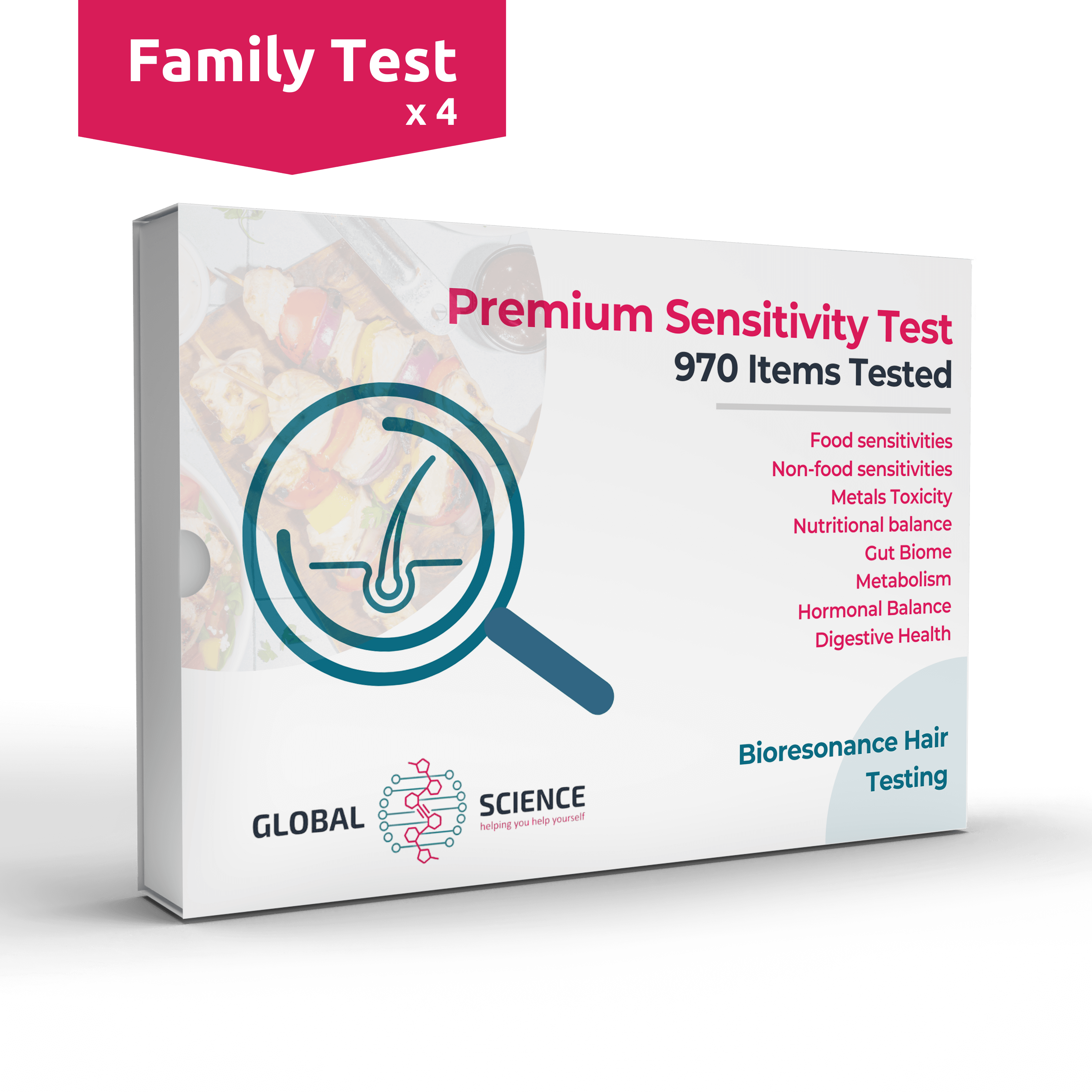Wheat Allergy
Wheat is a grass cultivated for its seed and cereal grain. It is a staple food throughout the world. Together, the multiple species of wheat make up the genus Triticum. The most widely grown is common wheat (T. aestivum).
The world production of wheat is 749 million tonnes as of 2016, which makes it the second most-produced cereal – maize being the first. As an important source of carbohydrates, it is the leading source of vegetal protein in food containing about 13% protein, which is high compared to other cereals. Wheat is a source of multiple nutrients and dietary fiber when eaten as the whole grain.
Gluten is the major part of wheat protein and can trigger coeliac disease, non-coeliac gluten sensitivity, gluten ataxia, and dermatitis herpetiformis in a small percentage of the population.
A wheat allergy typically presents itself after consumption or through contact. A wheat allergy involves immunoglobulin E and mast cell, like all allergic responses. Usually, the allergy is due to the seed proteins of wheat.
Wheat intolerance/sensitivity
Wheat intolerance or sensitivity is where a person presents digestive symptoms after the consumption of wheat products. This condition can still be uncomfortable and embarrassing for the individual, despite being a less severe condition than an allergy.

Nutrition
Wheat is quite a nutritious grain, containing vitamin B1, B2, B3, B5, B6, folic acid, vitamin E, calcium, magnesium, manganese, phosphorus, selenium, zinc, copper, and iron. It is also rich in dietary fiber. In bleached (white) wheat flour as much as 40% of the original grain is removed, including the bran and germ of the wheat, which are the most nutrient-rich parts.
Wheat-free grains are used to make wheat-free products, but can also be found in flour or flake form for baking and cooking.
Wheat-free grains
Amaranth
Barley
Buckwheat
Corn (or maize)
Millet
Oats
Quinoa
Rice
Rye
Sorghum
Wheat-free products include:
Flour
Almond
Arrowroot
Millet
Brown rice
Buckwheat
Potato
Coconut
Cornmeal (maize)
Garbanzo
Oat
Rye
Sorghum
Teff
Bread and bread products
Almond
Millet
Brown rice
Rye
White rice
Buckwheat
Replacing key nutrients when eliminating wheat
It is important to use alternative items in your diet when undertaking either a short or long term elimination diet to maintain nutrient balance.
Below good examples or nutritional alternatives when eliminating wheat:
B Vitamins
Grains
Oats, rye, buckwheat, brown rice, quinoa
Other
Brewer’s yeast, peanuts, mushrooms, soybean flour and soybeans, split peas, pecans, sunflower seeds, lentils, cashews, chickpeas, broccoli, hazelnuts, peppers
Vitamin E
Spinach, kale, broccoli, Swiss chard, turnip greens, collards, avocado, almonds, hazelnuts, pistachios, sunflowers seeds, prawn/shrimp, crayfish, salmon, smoked salmon, swordfish, herring, trout, olive oil, sunflower oil, sweet potato, squashes, kiwi, mango, peach, nectarines, apricots, guava, raspberries, blackberries
Calcium
Watercress, kale, broccoli, low-fat mozzarella, low-fat cheddar, yogurt, pak choi, tofu, sugar snap peas, almonds, tinned sardines in oil with bones, tinned pink salmon.
Magnesium
Grains
Buckwheat, rye, millet, brown rice, quinoa
Other
Kelp, almonds, cashews, brazil nuts, peanuts, walnuts, tofu, coconut, soya beans, figs, apricots, dates, prawns, corn, avocado, spinach, kale, broccoli, Swiss chard, turnip greens, collards
Manganese
Grains
Rye, oats, brown rice, barley, quinoa
Other
Mussels, hazelnuts, pine nuts, pecans, lima beans, chickpeas, aduki beans, lentils, pumpkin seeds, sesame seeds, sunflower seeds, pineapple, spinach, kale, tofu, soybeans, sweet potato, blueberries, raspberries, strawberries
Zinc
Grains
Rye
Other
Spinach, beef, lamb, pumpkin seeds, sesame seeds, sunflower seeds, cashew nuts, cocoa powder, dark chocolate, pork, chicken, chickpeas, mushrooms
Iron
Grains
Rye, oats
Other
Pumpkin seeds, sunflower seeds, sesame seeds, chicken liver, oysters, mussels, clams, cashews, pine nuts, hazelnuts, peanuts, almonds, beef, lamb, lentils, white beans, soybeans, kidney beans, chickpeas, lima beans, spinach, Swiss chard, kale, dark chocolate
Selenium
Grains
Brown rice, rye
Other
Brazil nuts, mushrooms, shrimp, sardines, oysters, tuna, sunflower seeds, liver, eggs, beef, turkey, cottage cheese
Copper
Grains
Rye, oats
Other
Sesame seeds, cashews, soybeans, mushrooms, sunflower seeds, tempeh, garbanzo beans, lentils, walnuts, lima beans, liver, spirulina, dark chocolate, collard greens, Swiss chard, spinach, kale
Phosphorus
Grains
Brown rice, oats, rye, quinoa
Other
Chicken, turkey, pork, liver, sardines, scallops, salmon, mackerel, crab, milk, yogurt, cottage cheese, sunflower seeds, pumpkin seeds, Brazil nuts, pine nuts, almonds, pistachios, cashews
SENSITIVITY TESTS
America's best non-invasive sensitivity test uses a small hair sample to test up to 1300 Foods, inhalants, vitamins and minerals.
Order today and join over 250,000 satisfied customers who now understand their sensitivities and body health.
-
Core - Single
WAS $97.00NOW $37.00SAVE $60.00
400 item food, environmental and metals sensitivity test.
-
Premium - Single
WAS $114.00NOW $47.00SAVE $67.00
970+ item comprehensive sensitivity and health test report.
-
Advanced Sensitivity Test - Single
WAS $149.00NOW $62.00SAVE $87.00
1300 items, our most advanced sensitivity and health test.
-
Premium - Family
WAS $315.00NOW $125.00SAVE $190.00
Our best value and most comprehensive sensitivity test for four people.




